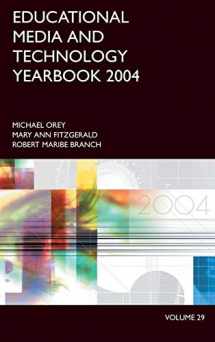
Educational Media and Technology Yearbook 2004: Volume 29 (Education Media Yearbook)
ISBN-13:
9781591580683
ISBN-10:
1591580684
Edition:
2004 ed.
Author:
Mary Ann Fitzgerald, Michael Orey, Robert Maribe Branch
Publication date:
2004
Publisher:
Libraries Unlimited
Format:
Hardcover
440 pages
FREE US shipping
Book details
ISBN-13:
9781591580683
ISBN-10:
1591580684
Edition:
2004 ed.
Author:
Mary Ann Fitzgerald, Michael Orey, Robert Maribe Branch
Publication date:
2004
Publisher:
Libraries Unlimited
Format:
Hardcover
440 pages
Summary
Educational Media and Technology Yearbook 2004: Volume 29 (Education Media Yearbook) (ISBN-13: 9781591580683 and ISBN-10: 1591580684), written by authors
Mary Ann Fitzgerald, Michael Orey, Robert Maribe Branch, was published by Libraries Unlimited in 2004.
With an overall rating of 3.6 stars, it's a notable title among other
Almanacs & Yearbooks
(Antiques & Collectibles, Encyclopedias & Subject Guides, Art, Schools & Teaching) books. You can easily purchase or rent Educational Media and Technology Yearbook 2004: Volume 29 (Education Media Yearbook) (Hardcover) from BooksRun,
along with many other new and used
Almanacs & Yearbooks
books
and textbooks.
And, if you're looking to sell your copy, our current buyback offer is $0.3.
Description
The 29th volume of the Educational Media and Technology Yearbook describes current developments and trends in the field of instructional technology. Prominent themes for this volume include e-learning, collaboration, and communities of practice. This volume will be useful fo media and technology professionals in schools, higher education, and business contexts, including instructional technology faculty, school library media specialists, curriculum leaders, business training professionals, and instructional designers. It has become a standard reference in many libraries and professional collections. Part One, Trends and Issues, highlights the major trends of the year: online learning, accessibility issues and communities of learning. Part Two, School and Library Media, concentrates upon chapters of special relevance to K-12 education, school learning resources, and school library media centers. In Part Three, Leadership Profiles, authors provide biographical sketches of the careers of instructional technology leaders. Part Four, Organizations and Associations in North America, and Part Five, Graduate Programs in North America, are, respectively, directories of instructional technology-related organizations and institutions of higher learning offering degrees in related fields. Finally, Part Six, the Mediagraphy, presents an annotated listing of selected current publications related to the field.


We would LOVE it if you could help us and other readers by reviewing the book
Book review

Congratulations! We have received your book review.
{user}
{createdAt}
by {truncated_author}


